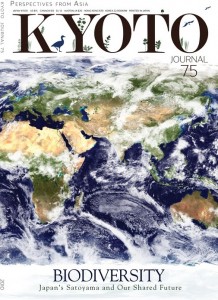
In a few hours I’ll be dragging myself out of bed at an impossibly early hour and jumping on a bullet train to Nagoya. There I’ll be helping to represent Kyoto Journal at the UN Convention on Biodiversity (COP10) and while I’m about it I’ll also handing out some flyers and seeking out and engaging like minded souls for our anti-aquarium campaign here in Kyoto.
At COP10 I’ll be meeting a lot of different people with a lot of different goals… but let’s look at the bigger picture. Currently a 5th of all plant and mammal species are threatened with extinction – and their loss is quite definitely our own. We depend on other species for food, medicine, climate control, clean water… in short for our own survival. “To preserve and conserve biodiversity between now and 2020, the conference is debating whether to set aside either 15 or 20 percent of terrestrial areas and a yet to be decided percentage of the world’s marine areas as sanctuaries.” (LINK) There is no doubt that the decisions made and agreements reached in Nagoya over the coming week will determine whether we can avoid the “6th Great Extinction” and perhaps avoid irreparably damaging our own future chances of survival too. When you look at all that has been done and is being done to our biosphere and the paltry efforts to stop the roller-coaster ride to ruin, it is all to easy to feel gloomy about our future prospects and to doubt the political will for effective policy is there.
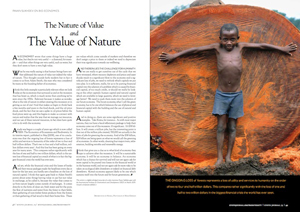
Kyoto Journal #75 is a landmark theme issue on biodiversity and was compiled specifically to be distributed at Nagoya to COP10 delegates and hopefully help to inspire them to do the right thing by our planet. Many people are saying it is the best issue of Kyoto Journal ever produced – which is saying something for an award winning magazine with a 26 year history. I can’t give you a better summary of issue #75’s contents than Brian Williams did at the KJ press conference a few days ago (I highly recommend you watch it) but I will say that it is largely about proposing solutions. Within its pages you will find hope for the future, based on successful conservation work already being conducted across the globe. We already have all the answers to our current environmental crisis – all that is needed is the political will to reach agreement and put these solutions into practice on a grand scale.
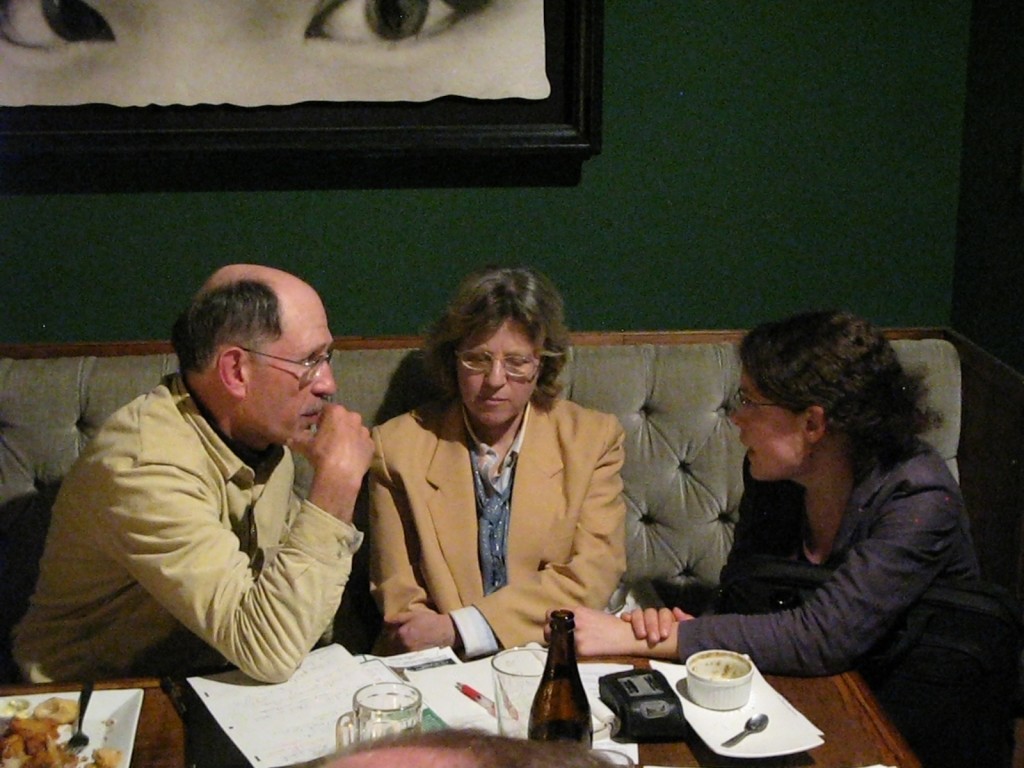
At the heart of KJ #75 is a section on the Japanese concept of satoyama co-written by the artist Brian Williams, environmental writer Winifred Bird and Professor Jane Singer. “Satoyama” (literally “hamlet-mountain) is a big buzzword at COP10, as the Japanese government has put this concept of sustainable land-use forward as a model solution to the world’s environmental problems. To quote Winifred Bird,
Satoyama describes a rural Japanese landscape made up mainly of managed woodlands and grasslands, rice fields, and the network of waterways and reservoirs associated with them…Satoyama is land modified but not over-simplified; used but not monopolized. It is an ecosystem biodiverse by virtue of custom and culture which predates environmentalism…It is characterized by a variety of uses; by the values of routine care, restraint, and community-scale management; by interconnection and complexity — by much, in other words, that is antithetic to short-term monetary profit and shortsightedly efficient modern agriculture. Yet it is perhaps that very “inefficiency†that opens up the space for human use and biodiversity to coexist within the satoyama landscape. LINK
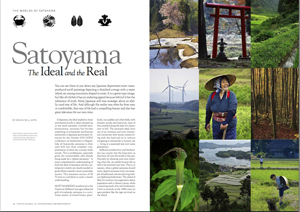
Satoyama, is certainly a fine model, but one ironically that has largely been destroyed in modern Japan by government (un)environmental policy and pork barrel construction projects… Even more ironically this destruction continues in Nagoya itself, for even as the central government proposes the satoyama ideal as a cure for the world’s ills, Nagoya’s own Hirabari satoyama is being bulldozed by developers despite strong local protest (sound familiar? – more about the background to that story here).
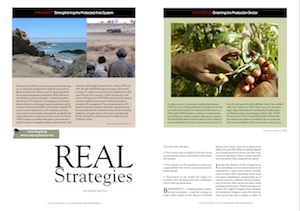
Back to KJ #75 – this issue is both informative and inspiring and (!), purely in design terms, very beautiful too. Don’t just take my word for it though, a lot of the articles in the print issue are also available for free online here: Kyoto Journal Current Issue
In addition (!) there are also over 30 exclusive reports available as free downloadable pdfs here: KJ75 ONLINE REPORTS
Of course, as I’m nominally the publicity officer for KJ, I’m bound to recommend it to you (on sale here! click to subscribe!), but here is some of the other online material I’ve been speed-reading through the last couple of days that I can recommend to get a grip on COP10 and all that’s at stake.
Eric Johnston’s reports for the Japan Times are essential as is his blog. This article gives a good overall introduction to the conference: Nations gather for COP10 biodiversity conference. This is useful too: ‘Satoyama’ concept gets major boost.
Background, prospects and initiative from the UK’s Guardian.
The economics of it – or why allowing biodiversity loss is literally throwing money away: UN puts a value on nature’s resources / Profiting from Biodiversity
And related to that – Save the tiger and make a killing.
Solutions? – Creating vast wildlife preserves is not enough. There needs to be corridors between them: This is the Largest Model for Wildlife Conservation in the World / The Corridor Initiative
Nagoya has to do better? – We all do!
Ah, that’ll do for starters. I have to go to bed now as I’m getting up in 3 hours! As you might guess, I’m very excited to be going to COP10 – Expect a full report when I get back!